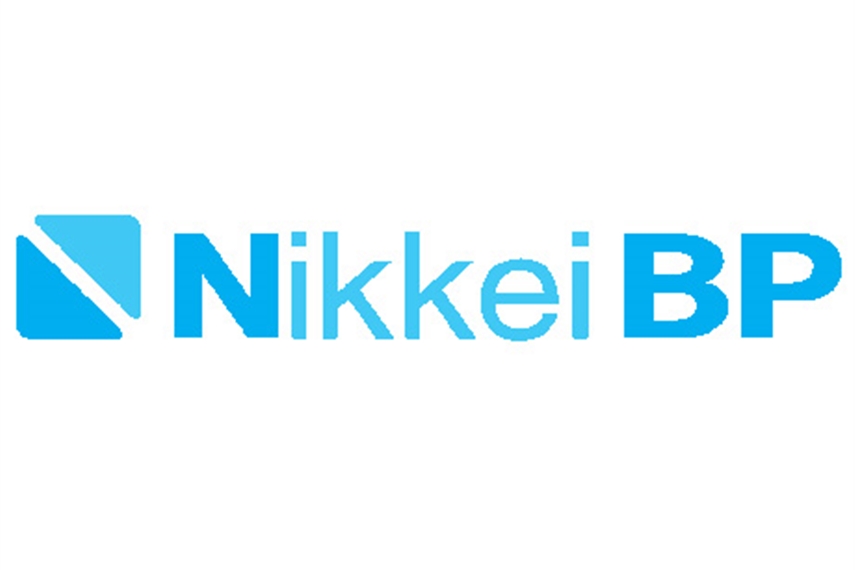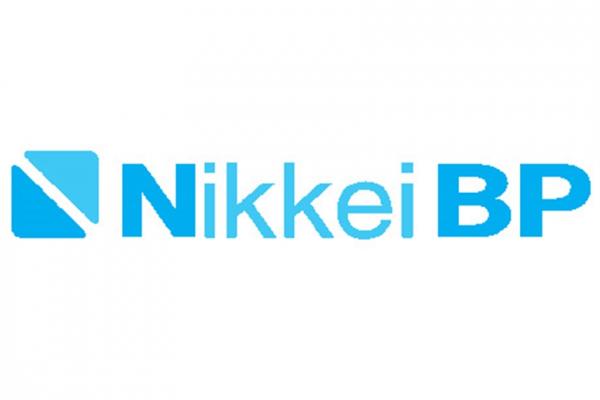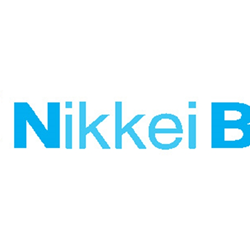
Source: “Nikkei Business” January 14, 2019 issue published by Nikkei BP.
Written by Shin-ichiro Kaneda
Reproducing or copying this document is prohibited.
This article is translated by 3M with approval by Nikkei BP. 3M is responsible for the translation to English.
____________________________
Hundred year-old enterprise exhibits “Organic growth”


The temperature was -100 C. The freezing cold of December enveloped the 3M headquarters in St. Paul, Minnesota, USA. Inside the glass-walled headquarters buildings, however, everything was wrapped in a warm, bright atmosphere.
With new buildings being built one after another, the headquarters is expanding. The stunning scale testifies to 100 years of uninterrupted dividend payments, with 60 consecutive years of annual dividend increases.
The spaces between the buildings are connected by covered walkways. These are for going back and forth between buildings, while avoiding the bitter cold, but one can also consider it a symbol of the frequent interactions between the company’s 90,000 global employees, and the continuous innovations that result.
Sharing failures
In one of these rooms, senior researcher Andy Fox demonstrated for us a filter experiment. Installed in one box is a conventional product from a competitor, and in another box, a 3M product. When a cigarette is lit inside each, the box with the competitor’s product remains filled with smoke, while the air in the box with the 3M filter is clear.
“Not only does our filter block the smoke, but the fibers in our filter wrap around the smoke particles and trap them.”
As he says this, Andy pulls out an enlarged photo of the filter. The fibers are twisted around in an intricate manner, but because they create spaces, the air can flow through unimpeded.
Using this technology, 3M is selling respirators in China and working on the PM2.5 atmospheric pollution. The company developed a respirator for children in 2017.
“Because children have smaller bodies, there’s a need to increase precision even more. Air pollution is a life-or-death problem. We want to create the best products for each and every one.”
Amanda Dauphinais, international business manager of 3M’s air purification business, says the company aims to further improve quality. Forty-five researchers working in the U.S. have volunteered to assist in the research and development at 3M’s research facility in China.
This is a perfect example of a 3M tradition: it’s a freely changing organization. 3M policies, which well-known global companies use for reference, include its “15% Culture” and “bootlegging” (moonshine making). These allow employees to spend 15% of their work time on research and activities of their own choosing. And, like making moonshine, this can be done secretly, in private.
3M, which began business in Minnesota in 1902, failed in its first attempts at mining for grinding stone material and got only inferior soft stone. With this, the company switched to sandpaper and brought forth a hit product. Subsequently, the company continued to share information about failed research within the company. This provided hints for other researchers, who began private research, and eventually resulted in products that were big hits. This sort of story happened over and over; one famous anecdote is how a “failure product” -- an adhesive that peeled off easily-- led to the birth of the famous Post-it® Notes.
The company, which has polished its own 46 core technologies, combines them to create a stream of new products. Respirators, for instance, are made using six technology platforms, providing performance that overwhelms the competition.
To pursue this sort of development, 3M has research facilities in 36 countries, where 12,000 researchers collaborate. Veteran researchers mentor newer personnel, and researchers’ network to understand who to ask for development hints.
“Teaching others develops trusting relationships and expands networks,” expressed CTO John Banovetz.
Ideas must not be killed. If a particular idea doesn’t lead to development in a researcher’s own organization, there is a system in place for sharing the idea. Then other researchers can take the kernel and use the 15% rule to develop it on their own.
Thinking in terms of 200 countries
Why are researchers in the U.S. absorbed in the problems of air pollution in China? CTO Banovetz speaks as though it should be obvious.
“It’s because we’re all connected.”
3M CEO Mike Roman declared, “We will improve lives and solve the serious societal problems around the world.”
3M has expanded into 200 countries around the globe, with 90,000 employees tackling problems of each country. And researchers around the world are supporting them from behind.
This indeed is where a major corporation can demonstrate its strength.
“If we can expand globally and connect people and technologies, then many hints and innovations can occur. The larger the company is, the more we can tackle the difficult problems.” (John Banovetz)
Therefore, regardless of nations being in conflict or how much U.S.-China trade relations are fractured, inside 3M’s research facilities, it’s just not relevant.
Rather, the focus is on facing the problems of the societies where 3M does business. 3M considers five steps of national development from a GDP perspective, and addresses them accordingly. In emerging countries with small GDP, 3M first enters with its infrastructure business. As the foundations for life are put in place, 3M moves in with production technology. As the country further develops, 3M introduces a stream of safety products, life products, and health products.
Thinking of solutions from the customer’s perspective – this attitude is also reflected in 3M’s growth goals.
“Organic local-currency growth targets.” This is an expression used by CEO Roman in investor meetings. Organic growth, viewed from the perspective of the local currency – or, in other words, management doesn’t think of “profits for the U.S. headquarters,” measured in dollars, but looks at results in the local currency, and aims to grow by building relationships of trust. Therefore, 3M’s goals for entering an emerging country are gentle numbers, like 3-5%.
“We’re like an ecosystem. If we don’t think of our customers, our employees, and the region, and try to satisfy all of them, then good things likely won’t happen for our stockholders.”
While saying this, Banovetz also emphasizes that as a public corporation, the company doesn’t slight its stockholders, either. This is demonstrated by 60 consecutive years of increasing dividends.
“But, if we thought only of stockholders, we wouldn’t be able to grow, and our profits wouldn’t increase. That’s because we wouldn’t be able to satisfy our customers.”
Will this approach remain unchanged in the future?
“It absolutely will not change. It’s what makes us 3M.”
In a country of shareholder capitalism, 3M has continued to walk its own path. For instance, outstanding employees are rewarded not with money, but are honored with a company award.
3M has a prize called the Carlton Society Award, named after a legendary 3M researcher. Employees who win, proudly hold the trophy and tell their stories.
Winners travel around the world to 3M business sites, talking with employees about how they addressed customer problems and collaborated with colleagues to perfect the technology. These stories link the 3M culture with the future.
In this way, technology is propagated across barriers of businesses or national borders. If a new issue is discovered, the knowledge of engineers scattered around the world rally and concentrate on it.
“We create the future”
Today, 3M’s power is being fully demonstrated in the automotive industry.
“Today, the smartphone-ization of automobiles is progressing at a ferocious pace.”
This expression comes from Raymond Eby, 3M Vice President of Automotive Electrification. Automobiles are in the midst of a dramatic change, with cameras and sensors being added to vehicles, along with IT and AI control. This leads to issues piling up at manufacturing sites.
Working together at these factories to develop solutions are 3M employees.
“We’ve had relationships with automobile makers for over 100 years. We’ve built deep relationships with makers all over, including in the U.S., Japan, Germany, Korea, and China.”
In the past, 3M made inroads with automobile makers by developing masking tape, which is used to create a clean boundary between paint colors on two-tone bodies. Since then, a great many 3M products have been used on production lines and in vehicles themselves.
“Several hundred of our sales representatives have passes to vehicle factories, and go into the production lines just like company employees, directly addressing issues there.” (Raymond Eby)
For example, regarding inexpensive parts, sales personnel don’t worry too much even if the company doesn’t use 3M products. This is because they know only they can solve the difficult problems, and focusing on those leads to higher profits, and allows 3M to stay ahead of the changing times.
Today, problems in the vehicle manufacturing sites are often addressed by 3M’s several thousand electronics researchers.
In the past, cars typically went through model changes once every five years, but now that has been reduced to two to three years. Automotive researchers struggle to keep up with the pace. However, electronics researchers are used to the yearly model changes in smartphone development.
“These folks aren’t bothered by the speed. They’re like, ‘is it okay to move this slowly?’” chuckled Eby. On the other hand, as smartphones evolve, their development cycles are tending to get longer. Electronics researchers with free time can be shifted over to automotive.
For example, what safety measures should be taken to prevent storage batteries from catching fire? When the problem was raised, a number of ideas came from 3M researchers around the world. These solutions are then proposed to automobile makers.
Researchers who are “pros” in their fields visit factories and work together to think of a variety of methods, including using cushioning material and applying adhesives. So far, just in the field of vehicle storage batteries, ten of 3M’s core technologies have been applied.
“We’re building the next-generation automobile. We’re attacking it with that sort of fighting spirit.”
Eby is given to this sort of fervent speech. Then he compares the situation to that of skyscrapers. Once, neither New York nor Tokyo had any skyscrapers. Their creation wasn’t just due to architects. If there weren’t advances in materials and parts, these huge buildings couldn’t be built. In the same way, unless the materials are good, it won’t be possible to build the safe, environmentally friendly cars of the future, says Eby.
As they apply their core technologies, they are addressing problems of various and numerous industries and countries.
When its employees, who are bound together by mutual trust, discover an issue, they share it with their colleagues around the world and propose ideas, who come together as needed to pursue the project, creating products and services. These people call themselves “3Mers,” and they are proud to be colleagues.
The sun goes down on the Minnesota campus. The covered walkways are crowded with groups of employees heading for home. As they pass each other, the air is full of voices inviting friends out to dinner, or to visit each other’s homes. In this countryside of America, the connections of a global company are deepened, and they push on to create the future.
Multimedia Files:



